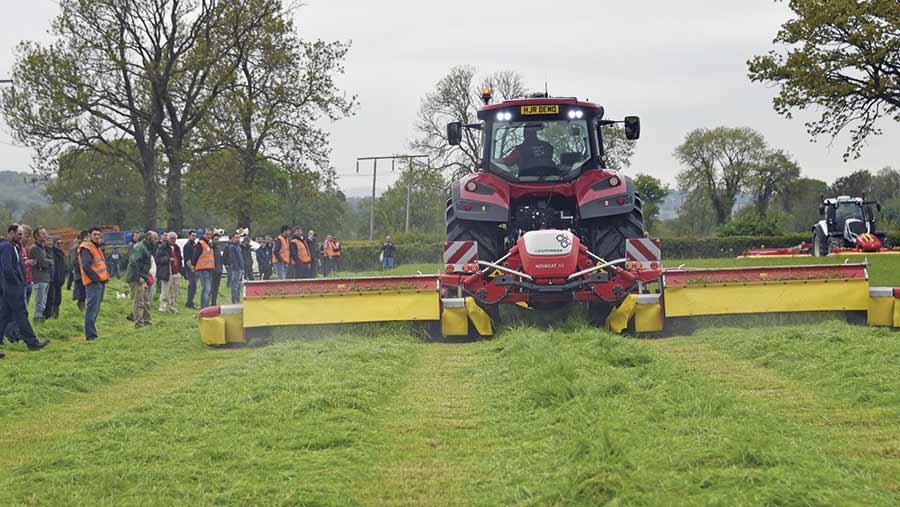How Finnish farmers have doubled grass growth in a short season
 Machinery demo at Royal Welsh Grassland Event
Machinery demo at Royal Welsh Grassland Event The short, five-month grass growing season that Finnish farmers face will strike a chord with many UK counterparts following one of the toughest spring growing seasons on record.
Yet progressive farmers in the Scandinavian country have doubled grass yields to more than 10,000kg DM/ha in the past five years, overcoming hard winter frosts of -10C and heavy spring rainfall.
Proagria national grassland consultant Anu Ellä told delegates at the Royal Welsh Grassland Event that the grass growing season typically ranged from 1 May to 19 October in the south and 9 June to 29 September in the north, with many fields resembling a mud bath as close to six weeks before cutting.
See also: 12 varieties added to grass and clover recommended lists
“In five months we have to produce all the silage for the next year so we have to be effective and we can’t have a lot of waste,” she said.
How Finnish farmers are improving grass yields
Finland dairy farming facts
- Average dairy herd size is 43 cows
- Herd size across the 10 dairy farms mentioned was about 85 head
- Finnish production average is 9,675kg milk a cow a year
- Feeding 22.5kg DM a cow a day (51% silage)
- 1.38 litres produced for every 1kg DM silage consumed
Ms Ellä explained how progressive Finnish farmers were working together in discussion groups to overcome these challenging growing conditions.
She highlighted a group of 10 dairy farmers she is working with who have doubled grass yields from 5,480kg DM/ha annually to 10,425kg DM/ha, on average, in the past five years (see Table 1).
Ms Ellä said Finnish farmers who had improved yield were choosing diverse grass mixes containing timothy for improved winter hardiness and tall fescues for drought survivability.
Meanwhile, tetraploid perennial ryegrasses, alsike clover and white clover are over-sown in the spring to replace that lost to winter kill and increase D-value and palatability of second and third silage cuts.
Improving sward density by adjusting cutting height to 10cm protected grass from frost and aided regrowth, Ms Ellä said. “Even soil surface of silage ground decreases the yield losses caused by ice damage and we don’t mow in the autumn,” she explained. “Good density going into the winter prevents problems the following year and grass grows at 350kg/day before first cut.”
Table 1: How Finnish farmers have doubled yield
|
Management practices in 2010: Growing 5,480kg/DM/ha |
Management practices in 2017: Growing 10,425kg DM/ha |
|
|
|
|
|
|
|
|
|
|
|
|
|
|
|
|
|
|
